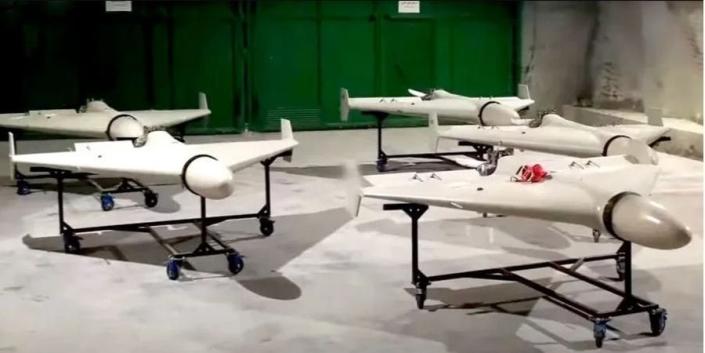
Intelligence reports in particular mention the expected delivery more than 200 Shahed-136 and Arash-2 kamikaze drones, and Mohajer-6 reconnaissance and combat UAVs.
Read also: Iranian instructors killed in Ukraine, Israeli media says
“It is known that the supply of these UAVs will be carried out over the Caspian Sea to the port of Astrakhan,” the Ukrainian intelligence agency said.
“The drones will arrive disassembled. Later, on the territory of Russia, they will be assembled, repainted and applied with Russian markings, including as ‘Geran-2,’” the report says.
Russia has already renamed and applied its own markings to two types of Iranian drones, the Shahed-131 and the Shahed-136, dubbing them the Geran-1 and Geran-2 respectively – apparently in an attempt to obscure their Iranian origins.
Since Sept. 13, when the Russian invaders first used Iranian-made kamikaze drones against Ukraine, the air defense forces have already shot down more than 300 of them, the Ukrainian GUR noted.
The Iranian authorities also intend to supply the Kremlin regime with approximately 1,000 additional weapons, including surface-to-surface short range ballistic missiles and more attack drones, to use in its war against Ukraine, CNN reported on Nov. 1.
Meanwhile, officials in Tehran, despite the ample evidence of Iran’s military cooperation with Moscow, continues to deny they are supplying Iranian drones to Russia.
Countering Iranian denials, Mykhailo Podolyak, the adviser to the head of the President’s Office, has in turn said that Iran deliberately supports Russian aggression against the civilian population of Ukraine.
“If Iran transfers missiles to Russia, it knows very well that they will attack our cities,” Podolyak said on Twitter.
“When Iran teaches the Russians how to fly drones, it knows that they will attack the energy infrastructure, provoking waves of refugees to the EU. Tehran is an accomplice to aggression in Europe and should be officially recognized as such.”
The Kremlin regime uses Iranian drones for massive attacks on critical infrastructure facilities in Ukraine.
After the first large-scale attack on Oct. 10, about 30% of the country’s power plants were reported to have been damaged.
Read the original article on The New Voice of Ukraine



